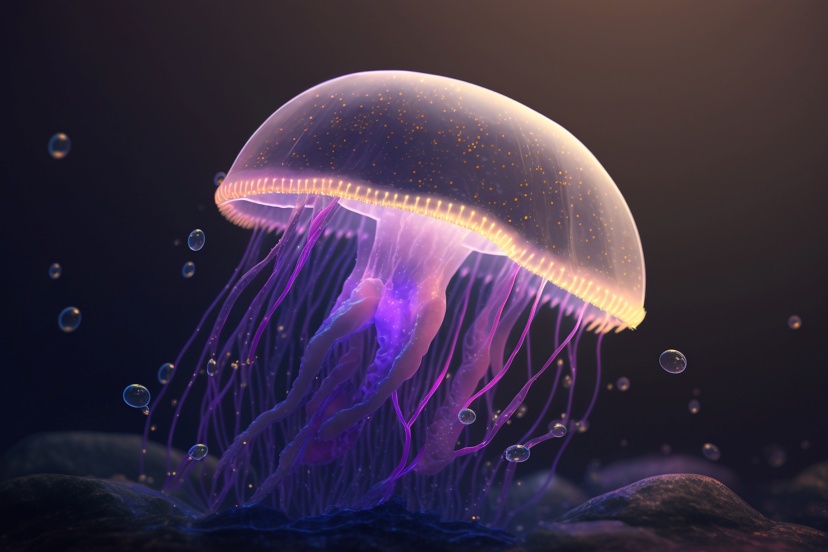Ocean Photography: Capturing the Majesty of the Underwater World
Introduction
As an avid ocean photographer, I have experienced the magical allure of capturing the beauty and diversity that lies beneath the waves. Ocean photography allows us to delve into a realm where tranquility and wonder coexist. In this article, I will share valuable insights, tips, and techniques to help fellow enthusiasts overcome the challenges and achieve success in ocean photography.
Importance of Ocean Photography
Ocean photography plays a crucial role in raising awareness and appreciation for our vast marine ecosystems. Through stunning visual narratives, we can highlight the intricate connections between marine life, fragile ecosystems, and human impact. By showcasing the beauty and fragility of the underwater world, we inspire others to protect and preserve our oceans.
>>> buy an underwater camera HERE <<<
Challenges of Ocean Photography
1. Water Visibility and Clarity
One of the primary challenges of ocean photography is the variable water visibility and clarity. The underwater environment can be affected by factors such as sedimentation, algae blooms, and weather conditions. To overcome this challenge, it’s essential to research and choose locations known for better visibility. Additionally, planning your dives during periods of optimal conditions can significantly enhance your chances of capturing clear and captivating images.
2. Light Conditions
Understanding the behavior of light underwater is crucial for achieving stunning results in ocean photography. As you descend into the depths, light is absorbed, and colors are lost. To compensate for this, it’s important to master techniques like manual white balance adjustments and exposure compensation. By experimenting with different settings and understanding how light interacts with the water, you can bring out the vibrant hues of the underwater world.
3. Composition and Framing
Creating visually captivating compositions underwater can be challenging due to the three-dimensional nature of the environment and the constant movement of subjects. Utilizing composition principles such as the rule of thirds, leading lines, and negative space can help you create balanced and visually appealing images. Remember to carefully position yourself in relation to your subject and consider the background to create a harmonious composition.
4. Subject Behavior and Movement
Marine life is inherently unpredictable, making it challenging to capture their behavior and movements. Patience and understanding are key. Observing the natural behavior of marine creatures and anticipating their movements can help you be ready to capture those captivating moments. Practice makes perfect, so spend time underwater, honing your observation skills and learning the habits of different species.
5. Equipment and Gear
Selecting the right equipment and gear is vital for successful ocean photography. Invest in a reliable underwater camera housing that matches your camera model. Additionally, consider the lenses suitable for underwater photography, such as wide-angle lenses for capturing expansive reef scenes and macro lenses for close-up shots of intricate marine life. Other essential accessories include strobes or video lights to illuminate your subjects and filters to correct color cast and enhance contrast.
>>> buy an underwater camera HERE <<<
Tips for Successful Ocean Photography
1. Research and Planning
Before embarking on an ocean photography adventure, conduct thorough research on the dive site or location. Understand the local marine life, their behavior patterns, and the best times to encounter them. Take into account the prevailing weather conditions and consult with local experts or dive operators for valuable insights. Proper planning will significantly increase your chances of capturing extraordinary moments.
2. Patience and Perseverance
Ocean photography requires patience and perseverance. Marine life may initially shy away from the presence of divers and cameras. Give them time to become comfortable with your presence, and observe from a distance before getting closer. By being patient and adapting to their behavior, you can capture authentic and natural images that truly reflect the underwater world.
3. Mastering Underwater Techniques
Improving your underwater techniques is essential for achieving better results. Practice buoyancy control to minimize disturbance to the marine environment and enhance your stability underwater. Refining your breath-hold diving skills will allow you to spend more time observing and photographing your subjects without causing stress. Minimizing camera shake by practicing steady hand movements will lead to sharper images. National Geographic: The Science of Ocean Photography.
4. Post-Processing and Editing
Post-processing plays a significant role in bringing out the best in your ocean photographs. While it’s important to maintain the natural beauty of the underwater world, subtle adjustments can enhance the colors and details captured by your camera. Utilize software tools like Adobe Lightroom or Capture One to fine-tune exposure, adjust white balance, and apply selective edits. Remember to maintain a balance and avoid excessive manipulation that compromises the integrity of the image.
5. Ethical and Responsible Practices
As ocean photographers, we have a responsibility to protect the marine environment. Respect marine life and their habitats by adhering to responsible diving practices. Avoid touching or disturbing marine creatures and refrain from removing or collecting any marine specimens. By promoting ethical and sustainable practices, we can contribute to the long-term preservation of our oceans.
Conclusion
Ocean photography is a captivating journey that allows us to immerse ourselves in the wonders of the underwater world. By understanding and overcoming the challenges specific to this realm, we can capture breathtaking images that inspire others to appreciate and protect our oceans. Remember to research, practice, and maintain a deep respect for the marine environment as you embark on your own ocean photography adventures.
>>> buy an underwater camera HERE <<<
FAQs
1. How can I improve water visibility for better underwater photography?
While you can’t control water visibility, choosing clear water locations and timing your dives during optimal conditions can improve your chances of capturing clearer images.
2. What are some recommended camera settings for ocean photography?
• Recommended camera settings include shooting in RAW format, using a lower ISO to minimize noise, and experimenting with different white balance settings to compensate for the loss of color underwater.
3. Are there any specific safety considerations for underwater photography?
• Safety is paramount in underwater photography. Ensure you are a certified diver with proper training and experience. Always dive with a buddy and follow established safety protocols.
4. What are the benefits of using artificial lighting in underwater photography?
• Artificial lighting, such as strobes or video lights, helps restore colors and highlights the details of underwater subjects. It can also add creative lighting effects and fill in shadows.
5. How can I contribute to marine conservation through my ocean photography?
• By capturing and sharing images that showcase the beauty and fragility of the marine environment, you can raise awareness and promote conservation efforts. Support organizations and initiatives dedicated to marine conservation and consider sharing your images with relevant scientific or conservation publications.
Now that you have a comprehensive understanding of the challenges and tips for success in ocean photography, it’s time to embark on your own underwater adventures and capture the awe-inspiring beauty of the oceans. Smithsonian Ocean Portal: Exploring Ocean Photography Happy shooting!
Further reading
Check out our other relevant articles:




